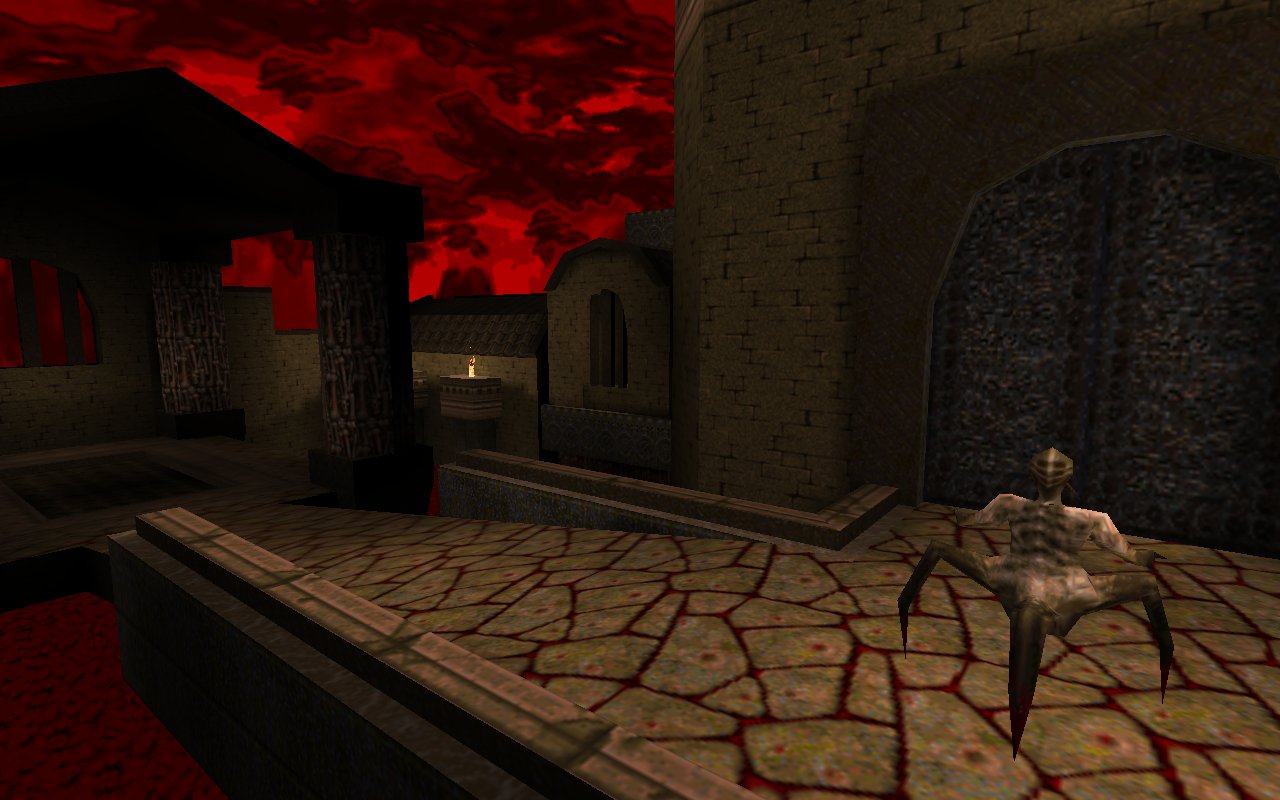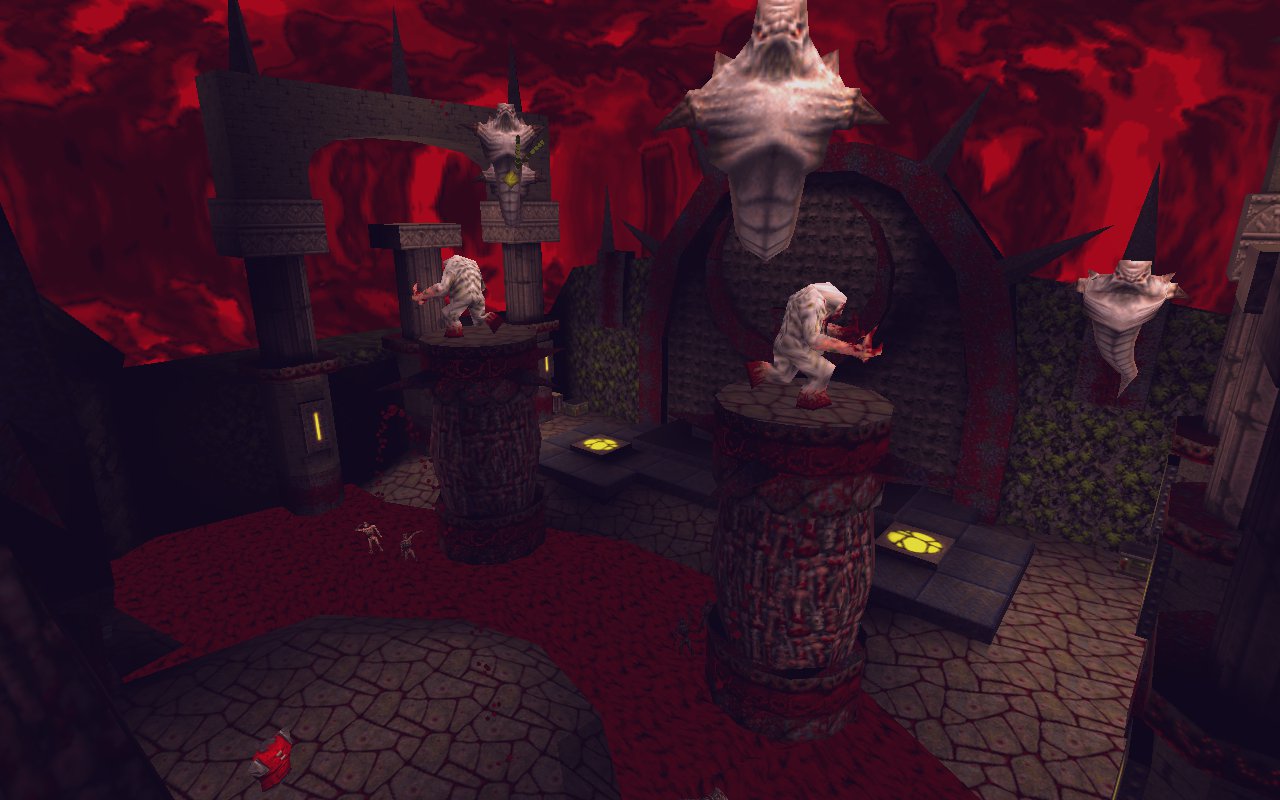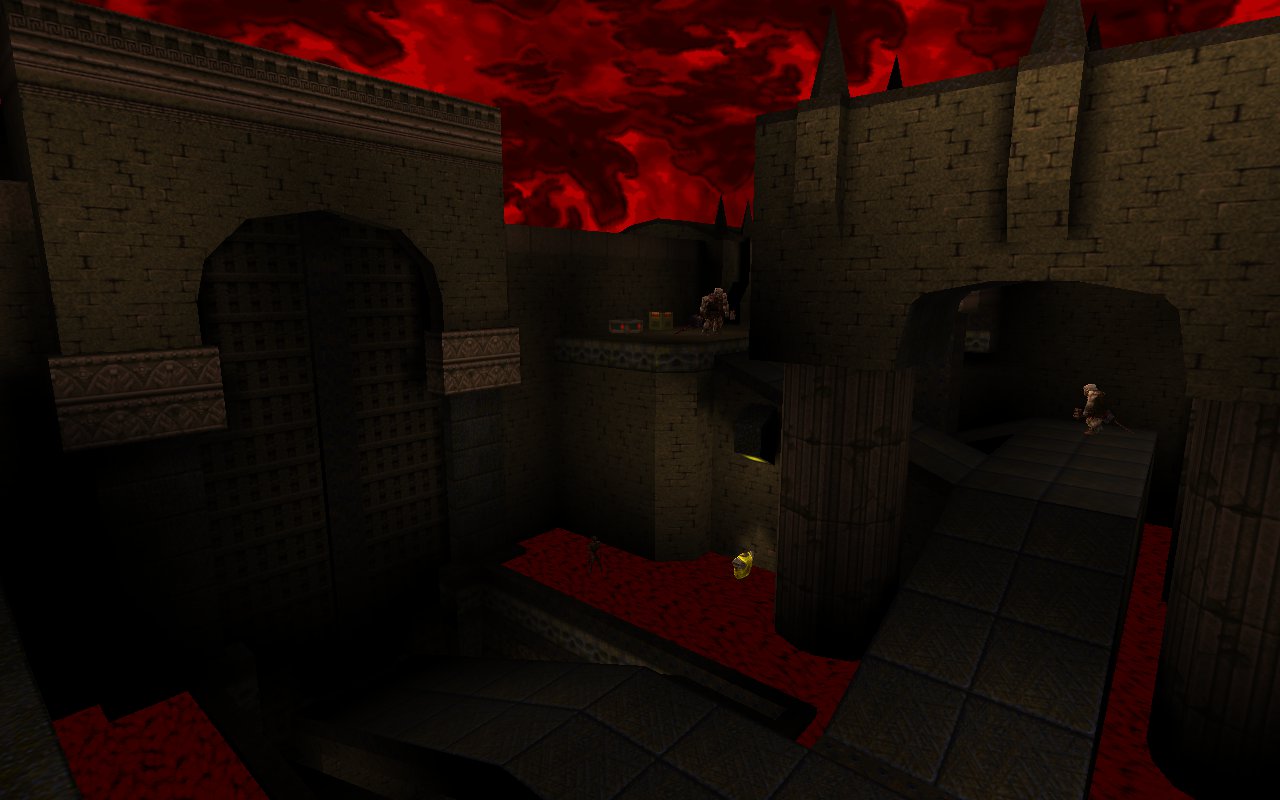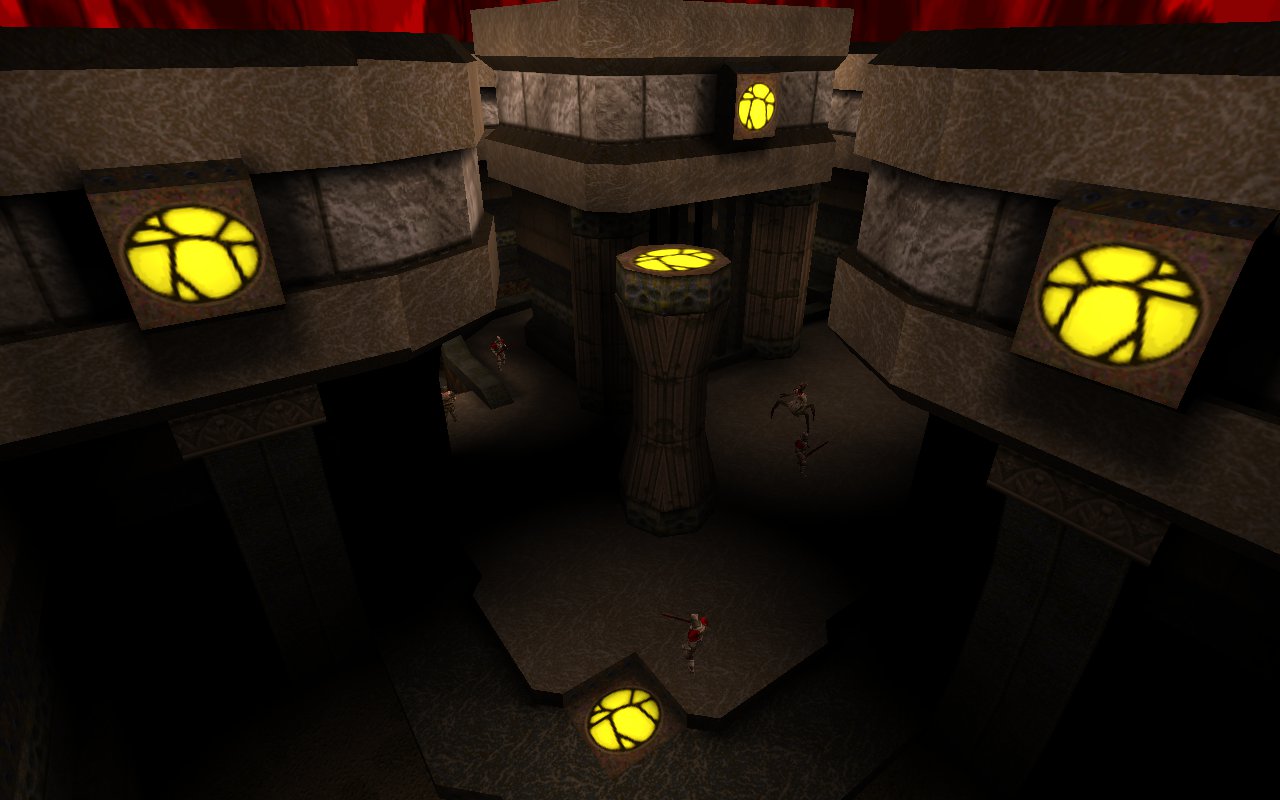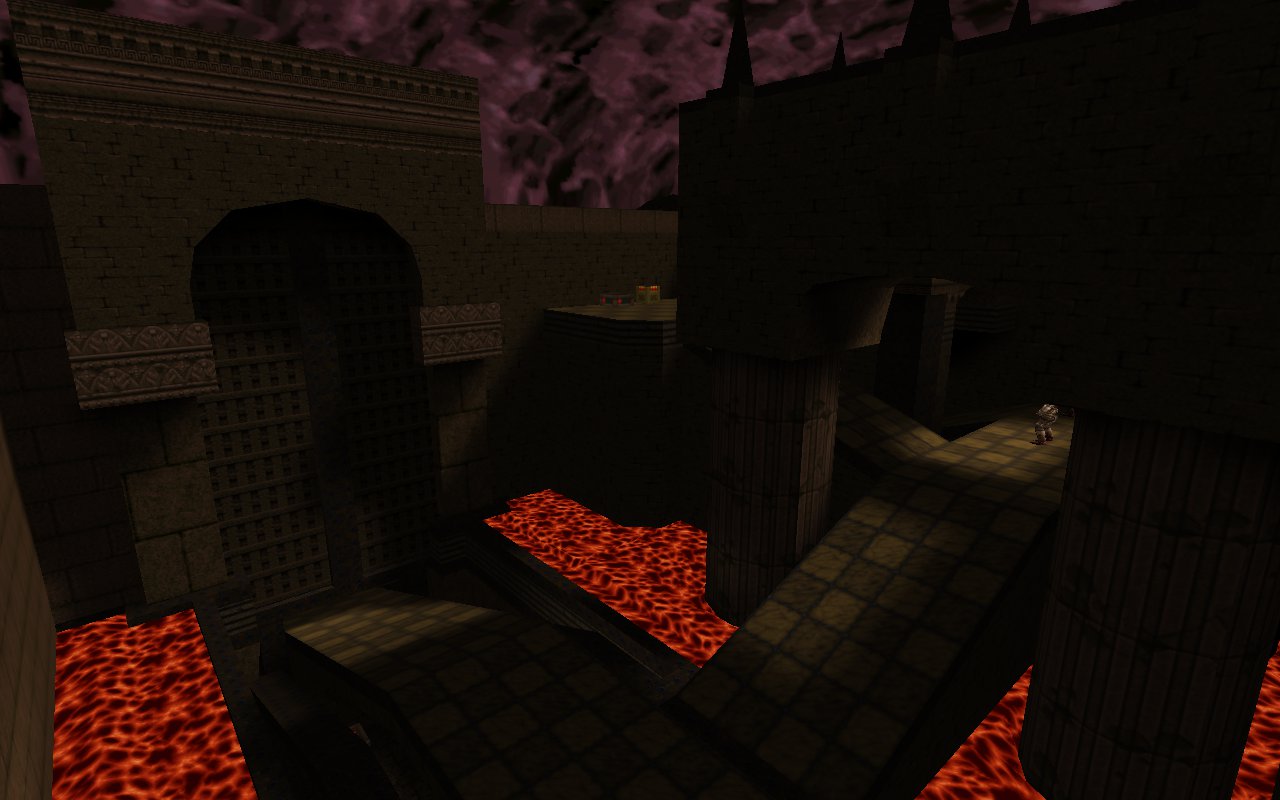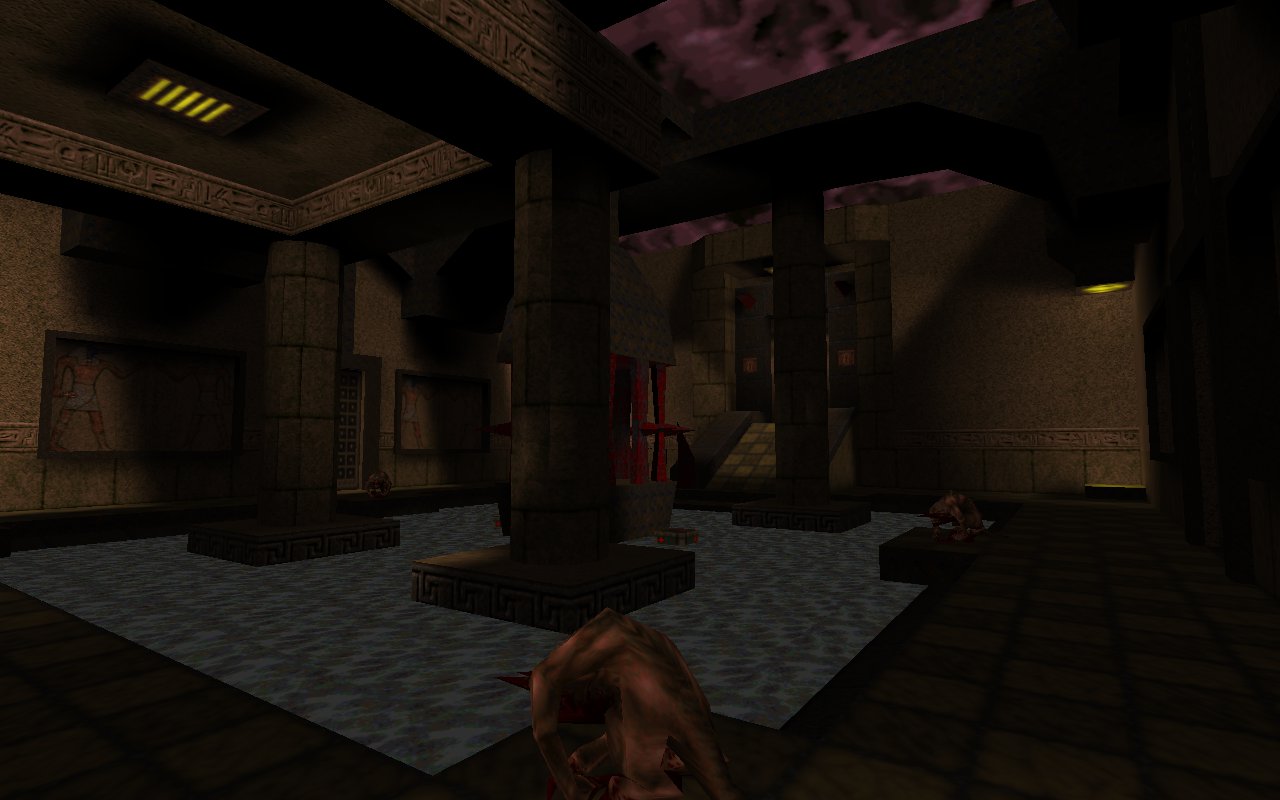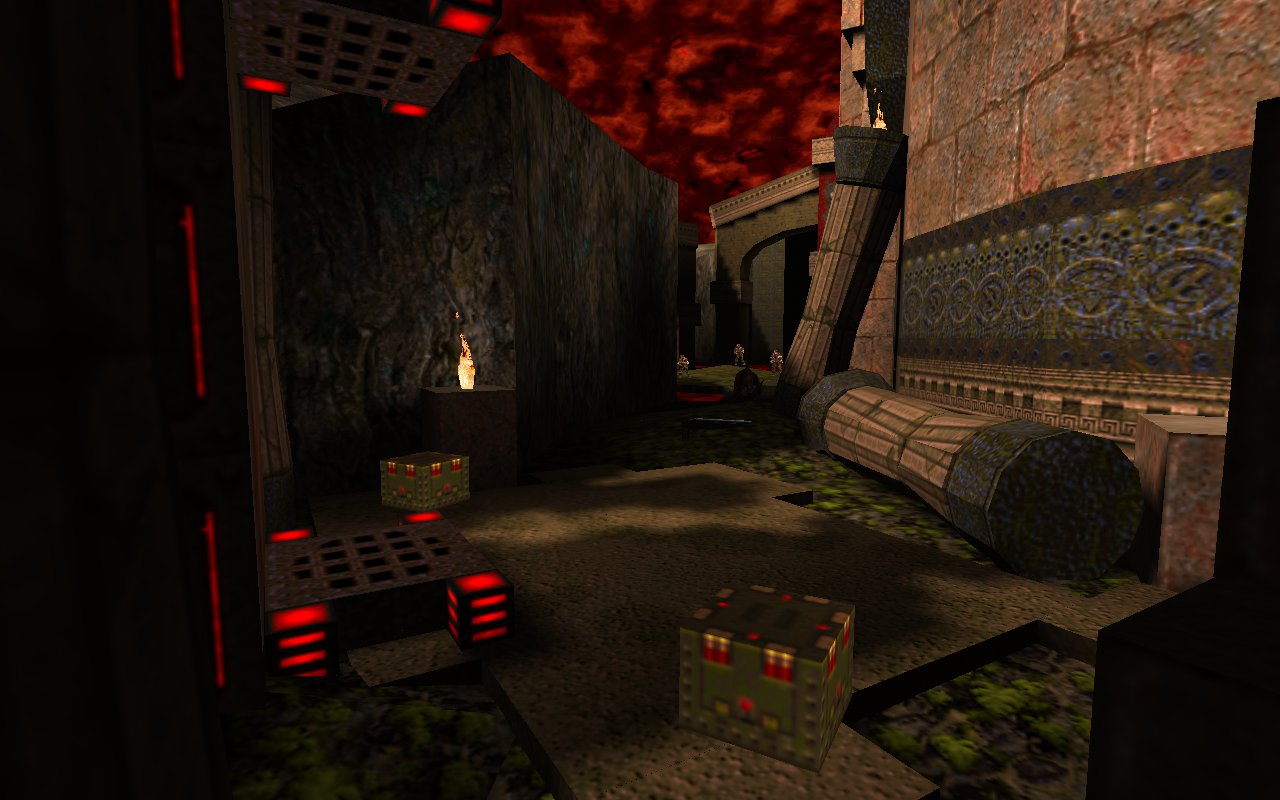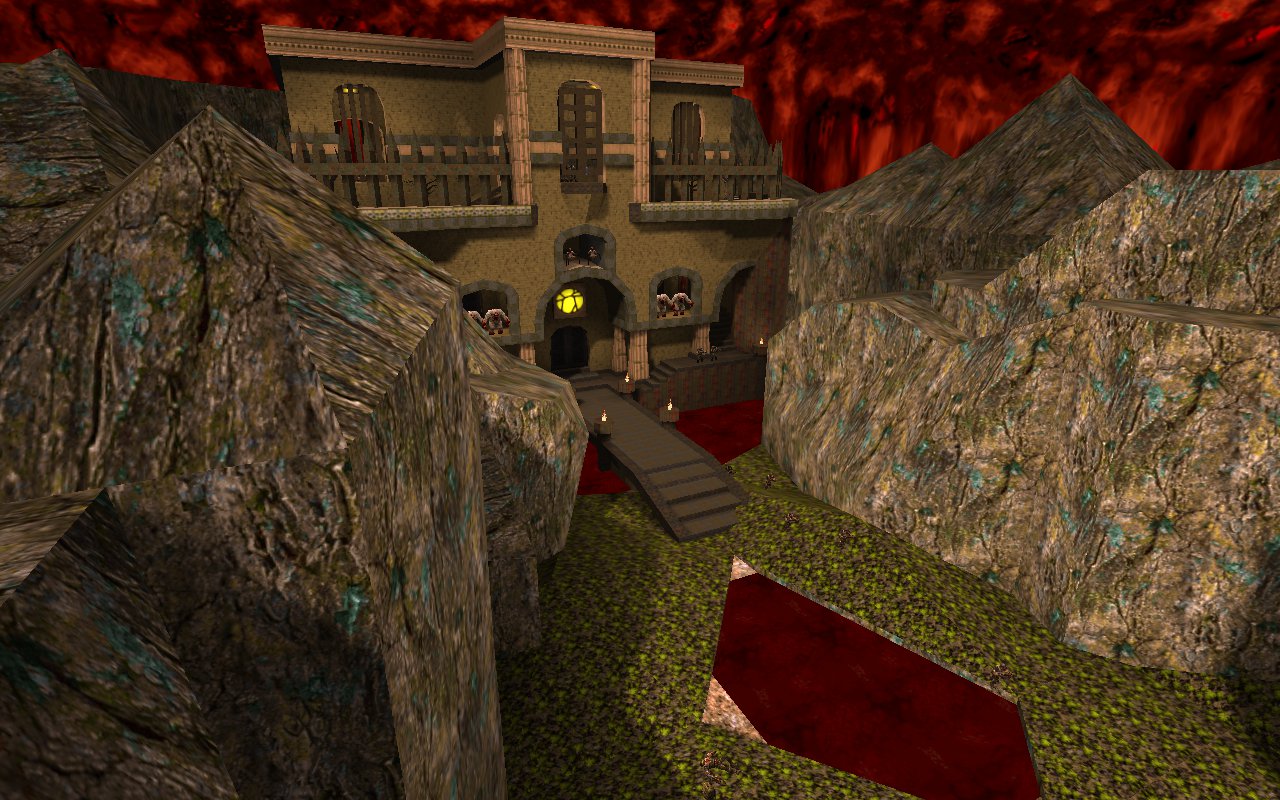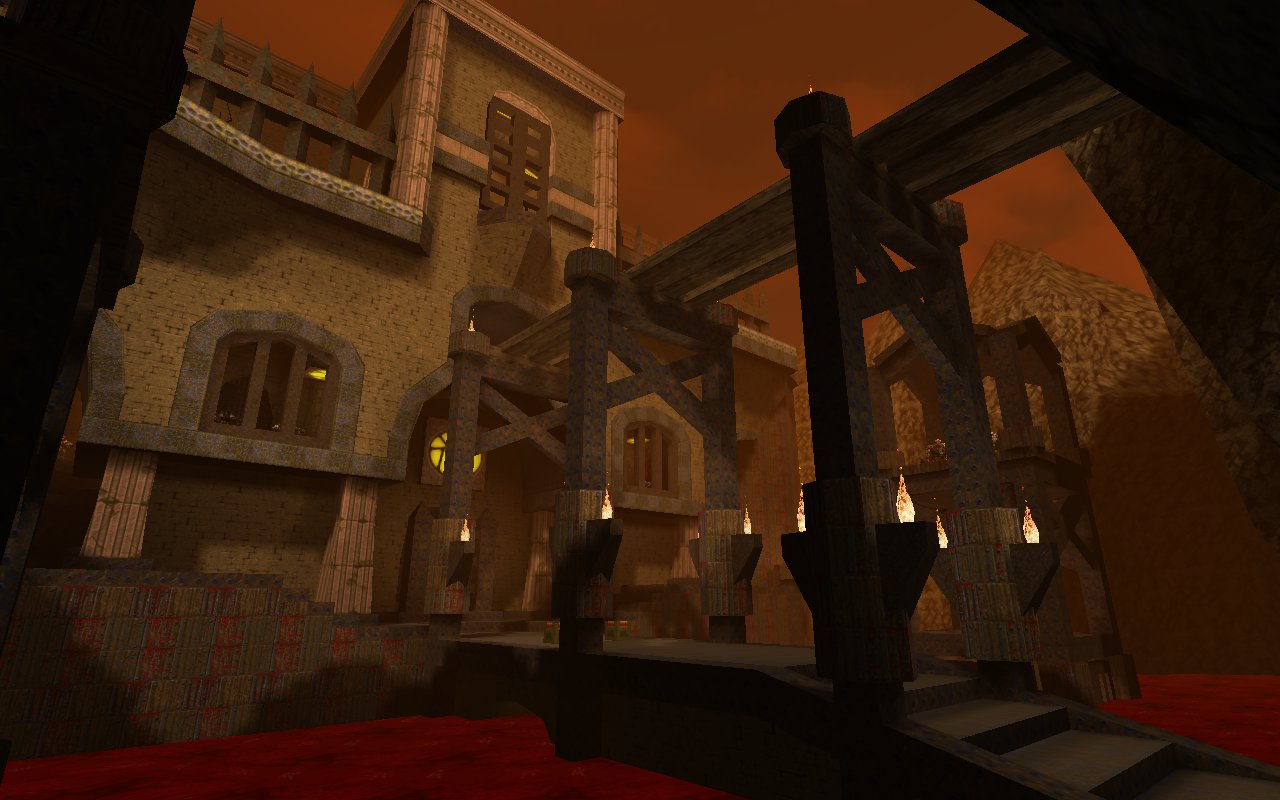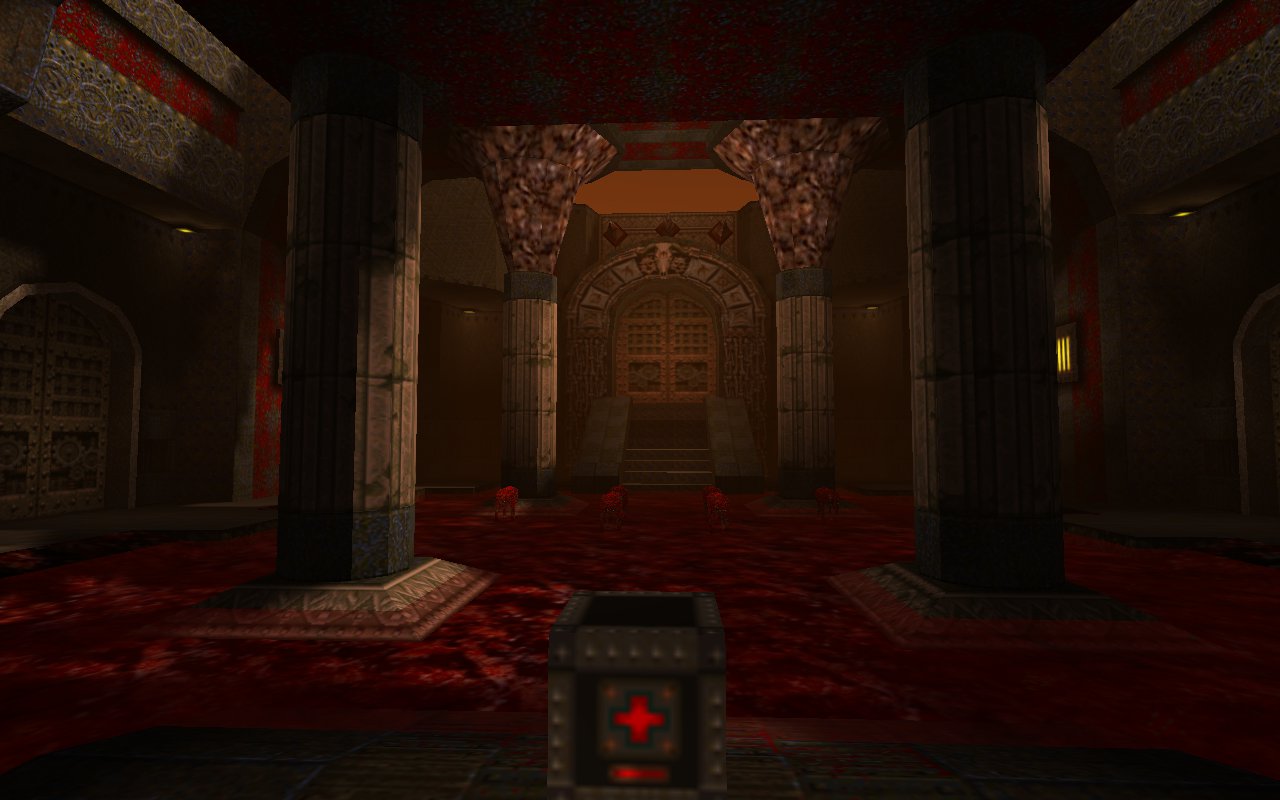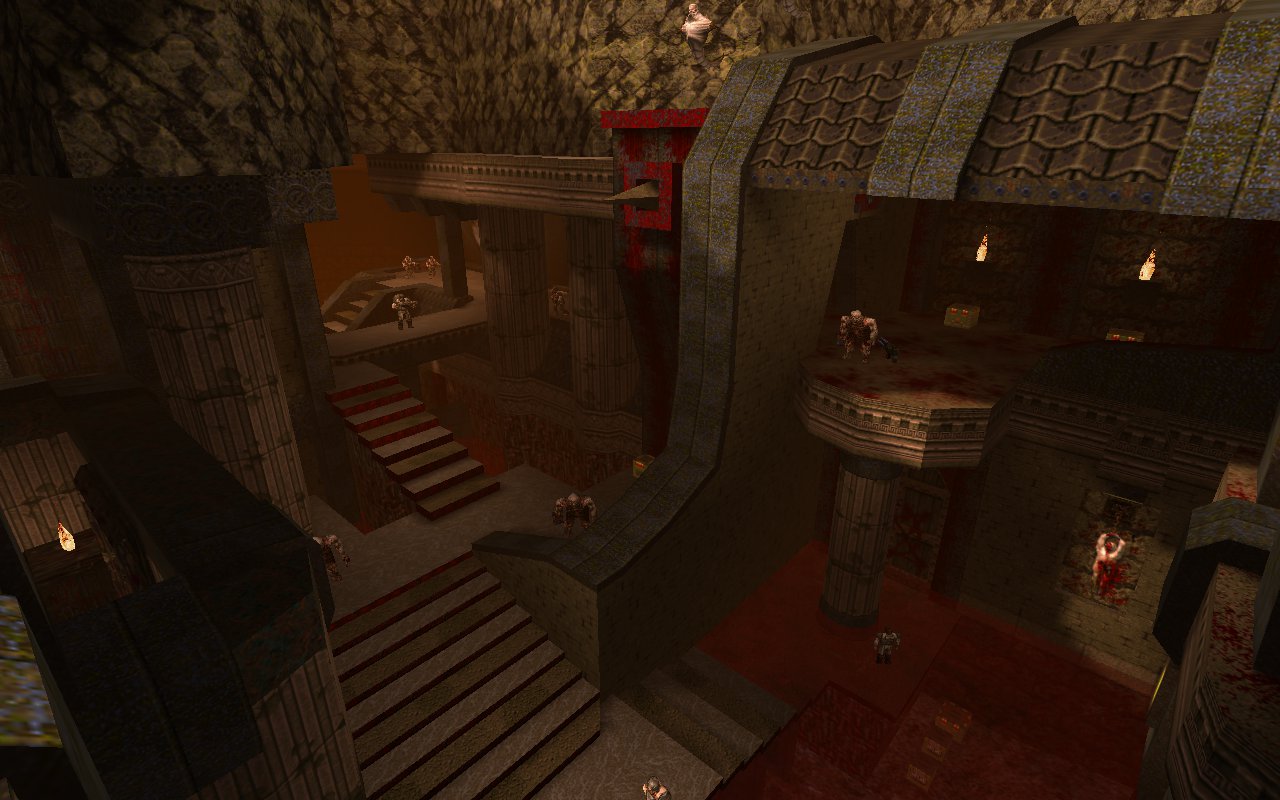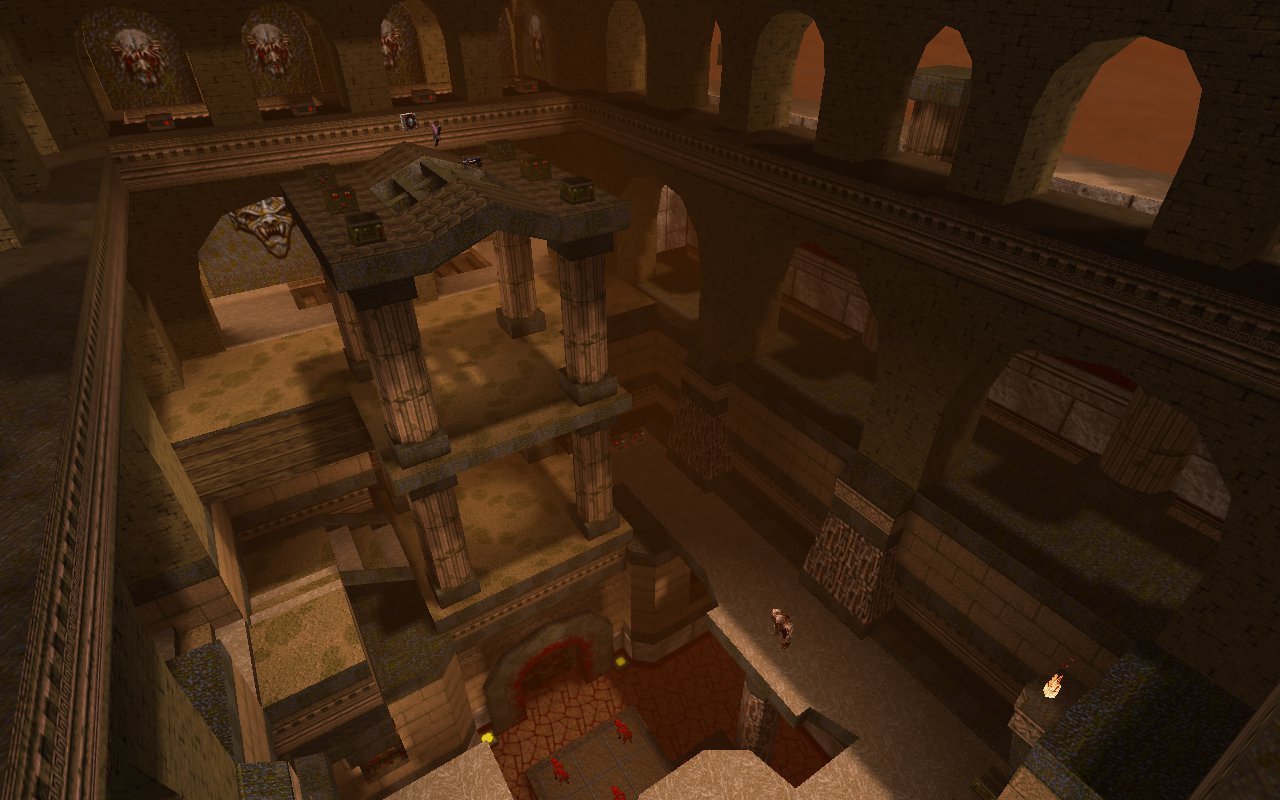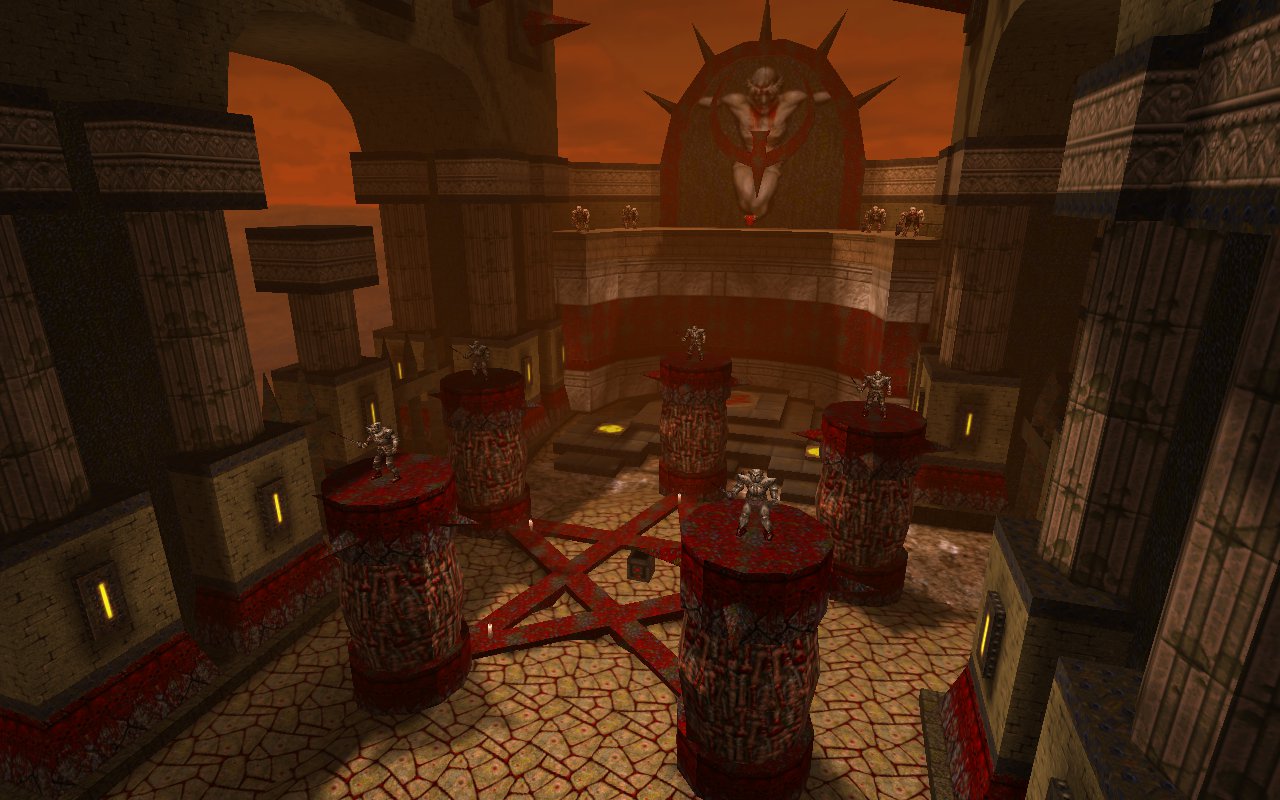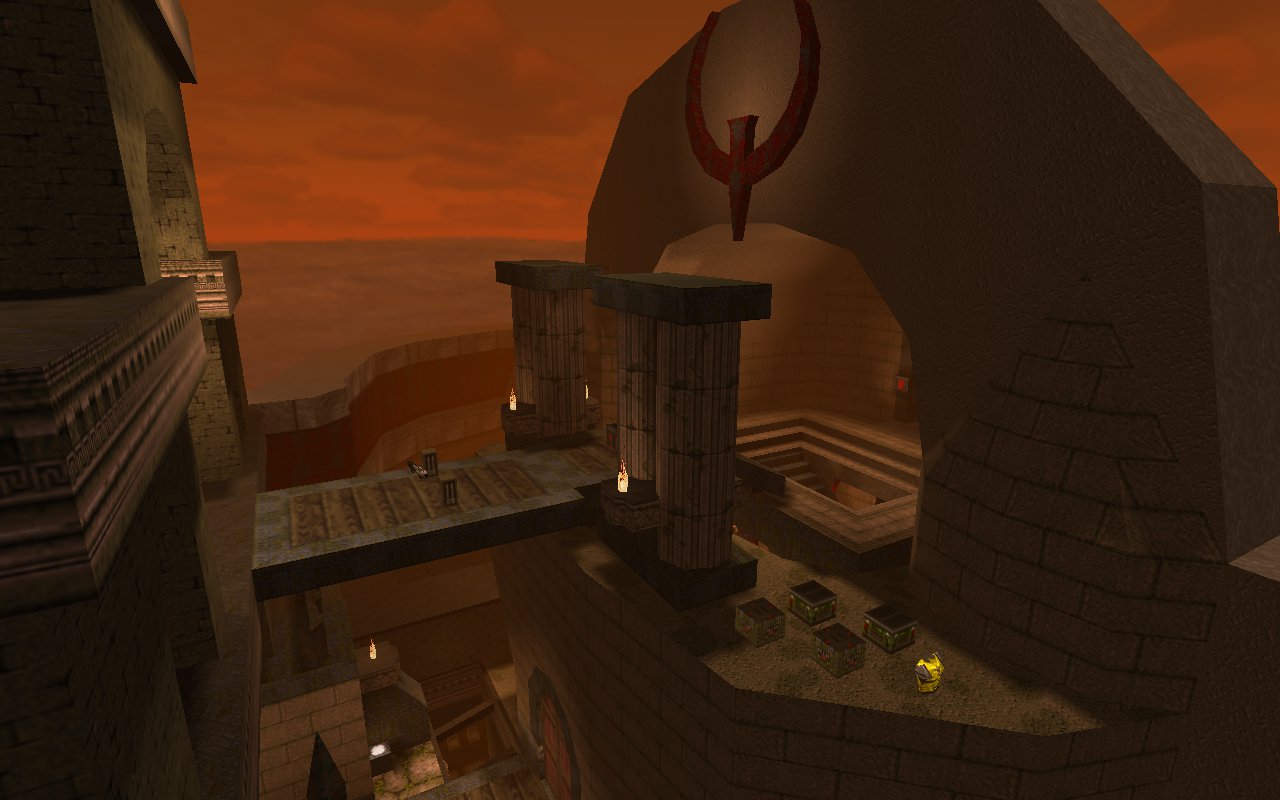A history of A Roman Wilderness of Pain, 1999-2009 (by Tronyn, 2009)
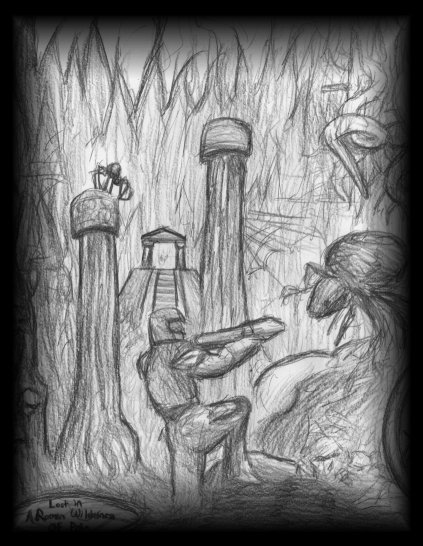
The A Roman Wilderness of Pain maps spent ten years in development, on and off. The project began in 1999 as a series of 13 short maps, each basically a setpiece surrounded by a few small hallways. The first 12 maps each featured a roman numeral marking the map number, and the final map had a Quake-style Q. These maps were eventually scrapped, the lighting in particular was annoying and generally too dark, though the scrapped maps were generally playable, featuring items and monsters (I, II, III, IV, V, VI, VII, VIII, IX, X, XI, XII, Q). A while later I returned to the maps with the intent of remaking the same layouts with a much greater level of architectural detail, and explicitly trying to develop a very gruesome style with flesh, skulls, spikes, blood and so forth. This effort produced NewI and NewII, the first with totally revamped architecture, the second with just a few rooms revamped. I then abandoned the maps again and released all of the map sources.
In 2004, five years after the inception of the maps, Mike Woodham released A Roaming Wildebeest In Spain his second level based on my scraps (the first one was FMB8, a large open Egyptian temple map). The story behind this map is its own epic saga; Mike Woodham had been trying to create a large terrain map called "Caves and Canyons" for months, and was having a very tough time of it due to engine and compiler limitations. Mike writes, "I lost weight, friends and the will to live many times during the last several months and I wont be doing another terrain based map." The result of this was Mike combining one of his terrain sections with Roman Wilderness of Pain maps i, ii, viii, ix. He explains, "I removed all lights in the individual maps and re-lit, changed 95% of the textures and only changed brushwork to make joining the individual sections easier." The new texture theme was sunny and Egyptian, rather than dark and metallic, with lava rather than blood.
In the meantime I had been trying to string together most of the Roman Wilderness scraps into a single map (BigRome). The layout was very flat, but I did manage to get most of the maps into a single map. Luckily, this map was so huge that I could not get it to work properly. <a>aguirRe]] had a few laughs at this map. The outside of the map was surrounded with rockwork, which he advised me to keep and cut other parts of the map. I eventually decided to chop up this large map into four maps, so that each one could have a more coherent design and theme. The first map, CanyonRome, kept a lot of the terrain work, and had only the gatehouse structure in terms of manmade architecture (a combination of VI and VII). The second map began where the first one ended, and consisted of everything after the gold key door in the final Roman1 (this is why, as many players noted, the second section of Roman1 is not really linked with the first section, and has a distinct style). After having trouble with getting this outdoor terrain and rockwork to vis properly, I rebuild the entranceway to the first map as a smaller, enclosed canyon with a bridge in the centre. I then realized that the second map was quite small, and could be pasted onto the first map as a second section, and the whole thing would still compile faster and better than the version with wide open terrain at the start. I had now moved from four maps to three. Roman1 now incorporated I, II, VI, and VII. The theme of the first half of Roman1, "A Roman Wilderness of Pain," was more runic-metallic, with a brick temple sitting on top of a metallic fortress with a sewer and a dock. I included tech monsters as well to reflect the Doom 1 or Quake 3 style of mix-n-match evil. The second half was a series of rooms and hallways which mixed flesh and metal.
Roman2 incorporated only maps IV and IX, but it was important to stick to these two sources only for this map, as it had a very specific theme, a "Venice of Blood," and only IV and IX of the original Roman Wilderness maps had architecture overtop pools of blood. The pools were on different levels so I had to adjust the level of blood to fit the two maps together. The final raft ride at the end leads to the entrance to Roman3, a section I built from scratch. Roman3 incorporates V, X, XII, and Q. There is a fair amount of totally new architecture in the map, especially the higher levels, huge arches have been stacked on top of the V map for example. Thematically, I decided to go for a slightly gothic look, using some flying buttresses and spiked arches right alongside the usual Roman architecture with metallic details and flesh/blood wherever possible. I was particularly happy with the player's ascent in this most vertical of the three maps. The final confrontation might be too difficult, with two boss characters, however.
A Roman Wilderness of Pain was released in December of 2009, ten years after the maps were first started, and five years after Mike Woodham released his map based on the scraps. It was very nice to be able to use most of the good architecture from the original project and build it into three coherent subthemed levels.
BSPs and map sources for all of the versions of the maps here mentioned can be downloaded here. Mike Woodham's FMB100 can be downloaded here. The Quake episode, A Roman Wilderness of Pain, can be downloaded here.
Written by Tronyn

 Easily install and launch Quake maps with the cross-platform
Easily install and launch Quake maps with the cross-platform 